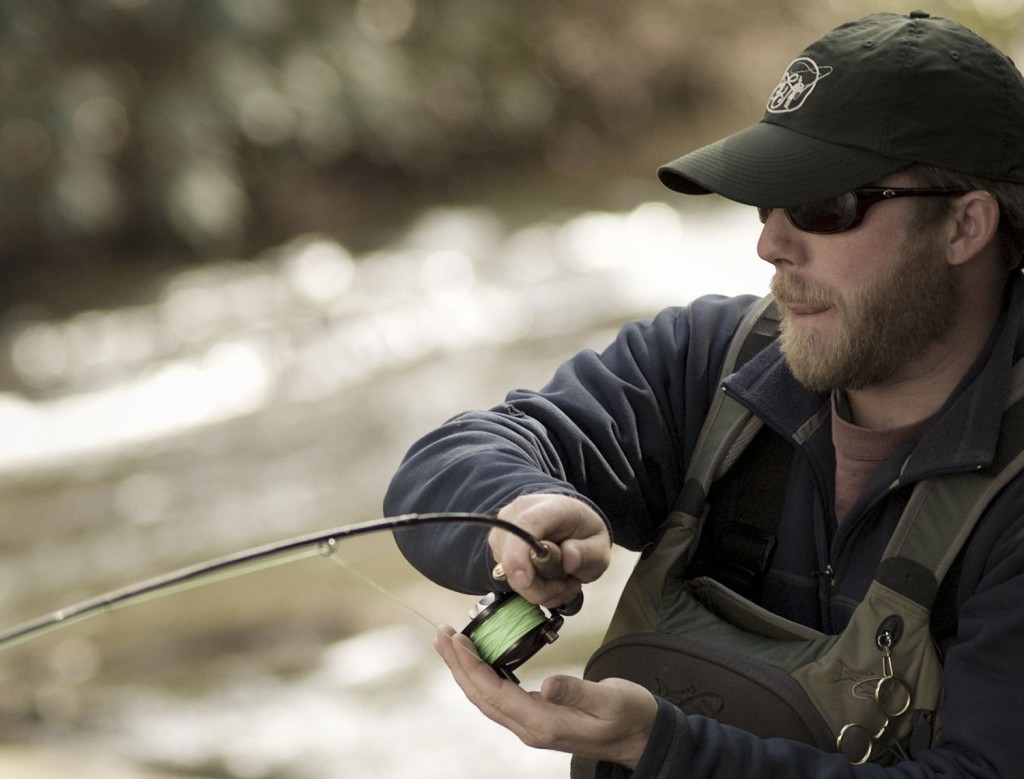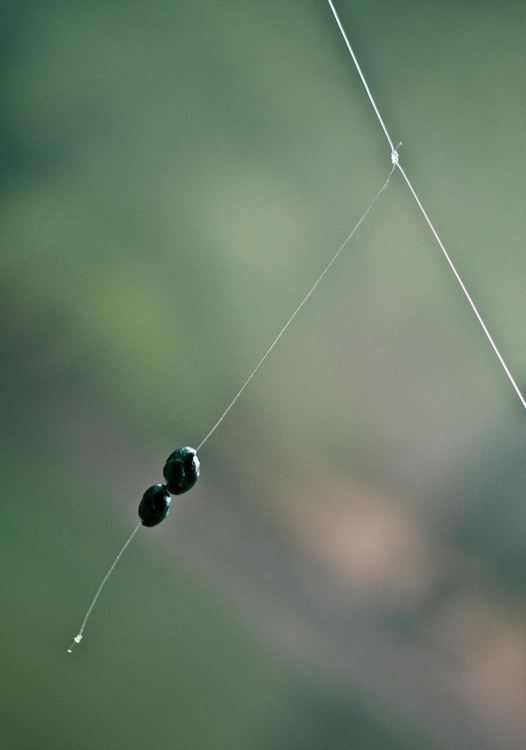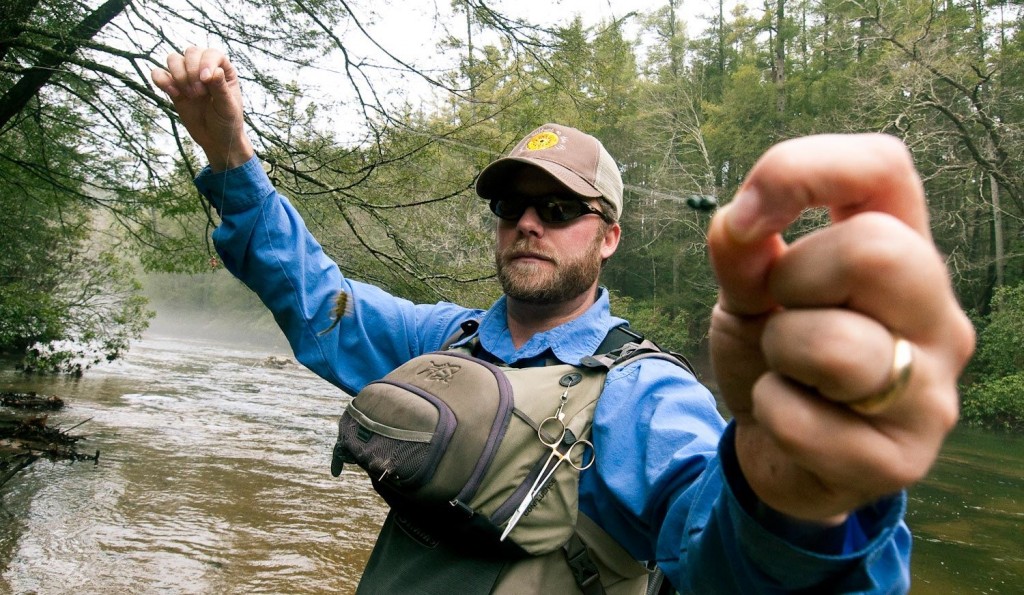You’ve been fishing hard all day long searching for that perfect honey hole. You know the one I’m talking about, it’s the one that holds that trophy trout that keeps haunting you in your dreams. It’s getting late, your tired and you know you should be heading back, but there’s a bend just up ahead, and your curiosity keeps pushes you forward with those powerful words, “This could be it, just see what’s on the other side”. Sure enough, as you round the corner, you lay your eyes on a picture perfect run, offering everything a trophy trout could desire. “Screw it”, you say to yourself, “I’ve got time for one more spot. You get into position, make the cast, mend your line, and begin following your strike indicator with your rod tip, when out of no where, it shoots under the surface like it was just attached to a iron dumb bell. You set the hook, and feel the heavy weight of the fish thrashing its big head, and you’re immediately on cloud 9. The adrenaline rush doesn’t last long though. It’s quickly replaced by painful heart ache when you feel your tippet snap, and watch your rod go straight. The excitement is all over…, you won’t land that trophy fish or even be graced with a quick glimpse of it for that matter. The only memory you’ll have to remember that trophy trout is the few aggressive head shakes after the hook set. You bring your fly-less rig to hand and find the tippet broke at the split-shot.
Has this ever happened to you before?
If you attach your split shot too tight on your tippet it can weaken its strength significantly. Most anglers try to avoid this by tying a triple surgeon’s or blood knot above their tandem nymph rig, and attach the split-shot above that. The knot keeps the split-shot from sliding down to the flies during fly casting, and it only has to be snugly secured, which limits the chances of it damaging the tippet. It’s not 100% full proof, but it’s the most popular method used by experienced nymph fisherman to limit the break offs during fierce fights. Serious anglers should get in the habit of regularly checking their nymph rig for weak spots and abrasions throughout their day of fishing, especially after each catch.
Attaching Your Split-Shot on Tags
An alternative method that eliminates the possibility of split-shot weakening your tippet is to attach it to the tag of your knot above your lead fly. Instead of trimming off both tags from the knot, leave one three inch tag, tie a quick overhand knot, and attach your split-shot. Tie on your lead fly and then dropper off the bend of the hook just like you do in a standard two-fly system. This works really well and it doesn’t add any time rigging if you want to change out fly patterns.
Attaching Split-Shot At the Bottom of Your Nymph Rig
A second option is attaching each nymph with a sliding dropper loop, and having your split-shot positioned at the very bottom of your nymph rig. To fish this method, first tie on a piece of tippet onto your leader 18-24″ long, with a standard triple surgeon’s or blood knot. Then tie a simple overhand knot at the end of your tippet and attach your split-shot. Next take two separate pieces of tippet 12″ long and tie a perfection loop at one end for each. Take one of them and secure it above your first knot (surgeon or blood knot) running the tag through the perfection loop just like you do when your putting on a fresh leader. Then take the second piece of tippet with the perfection loop and attach it above your split-shot. Finish off each sliding dropper loop by tying on a nymph. Anglers that fish this rig generally have their first sliding dropper and nymph around 6″ long. The second sliding dropper loop above the split-shot can be as much as 12″ in length.
I really like this rig over fishing a standard czech nymphing rig. It’s basically the same thing but instead of using a heavy point fly to get your flies down, you instead substitute split-shot. I like this because it gives you more versatility in applying weight. Moreover, the sliding dropper loops allow you to change out flies once or twice without having to completely rebuild the rig, which is a big negative with standard czech nymphing rigs. When your sliding dropper loops get too short to change out flies you can quickly detach them and add a new one.
Warning: This rig is suited best for roll casting or short casting with wide loops. It tangles easier than the other rigs mentioned, and it isn’t recommended for novice nymph fisherman.
I wrote this post because it’s so easy for all of us to get set in our ways, fishing only certain rigs because that’s what we’re most comfortable with. The fact is, sometimes there’s situations where alternative rigs will out perform your goto rig. Furthermore, no one ever truly stops learning in the sport of fly fishing. Don’t limit the growth of your skills by being unwilling to try new things. You never know, those new techniques may end up turning that unproductive day of fishing into a productive one. Give new rigs a shot before you write them off.
Keep it Reel,
Kent Klewein Gink & Gasoline www.ginkandgasoline.com hookups@ginkandgasoline.com Sign Up For Our Weekly Newsletter!



Good stuff Kent. Will share (with attribution) as our teaching tip at the June 8 Chapter meeting.
I used to hate split shot, and I weighted the flies I tie to avoid using it. But I found that conditions sometimes require the extra weight (even with weighted flies) and I forced myself to learn to use split shot correctly and to check and re-rig as necessary as you suggest.
I use the first two simpler methods you mentioned and not the last… and they have given me much more flexibility and, in my opinion, extra weight has put my fly in front of fish I would have missed by mere inches to a few feet in the water column.
Also, sometimes the weight frees the fly to have more action or, if applied right in front of the eye, gives a jigging action to a streamer. The weight can actually enhance presentation as well as location.
My home river’s regulations include a ban on split shot, so I don’t even use it anywhere else. I know shot will sink faster than a heavily weighted stone fly, and big stones might not be on every river, but you would be surprised how many fish take the big fly. Have never heard of anyone catching a fish on a split shot.
These are cool tips and extremely useful. I too hate it when shot slides all over your tippet and ruins it. These methods are great at keeping this from happening. When I first saw this topic I tried the second method one day. I was Czech nymphing in high water and needed some extra weight. I added the shot at the end of my rig as demonstrated above and it worked great. It didn’t tangle and got my flies down fast. These are a must-try. Great tips Kent!
That’s friggin genious!
Pingback: Who Makes the Best Split Shot?